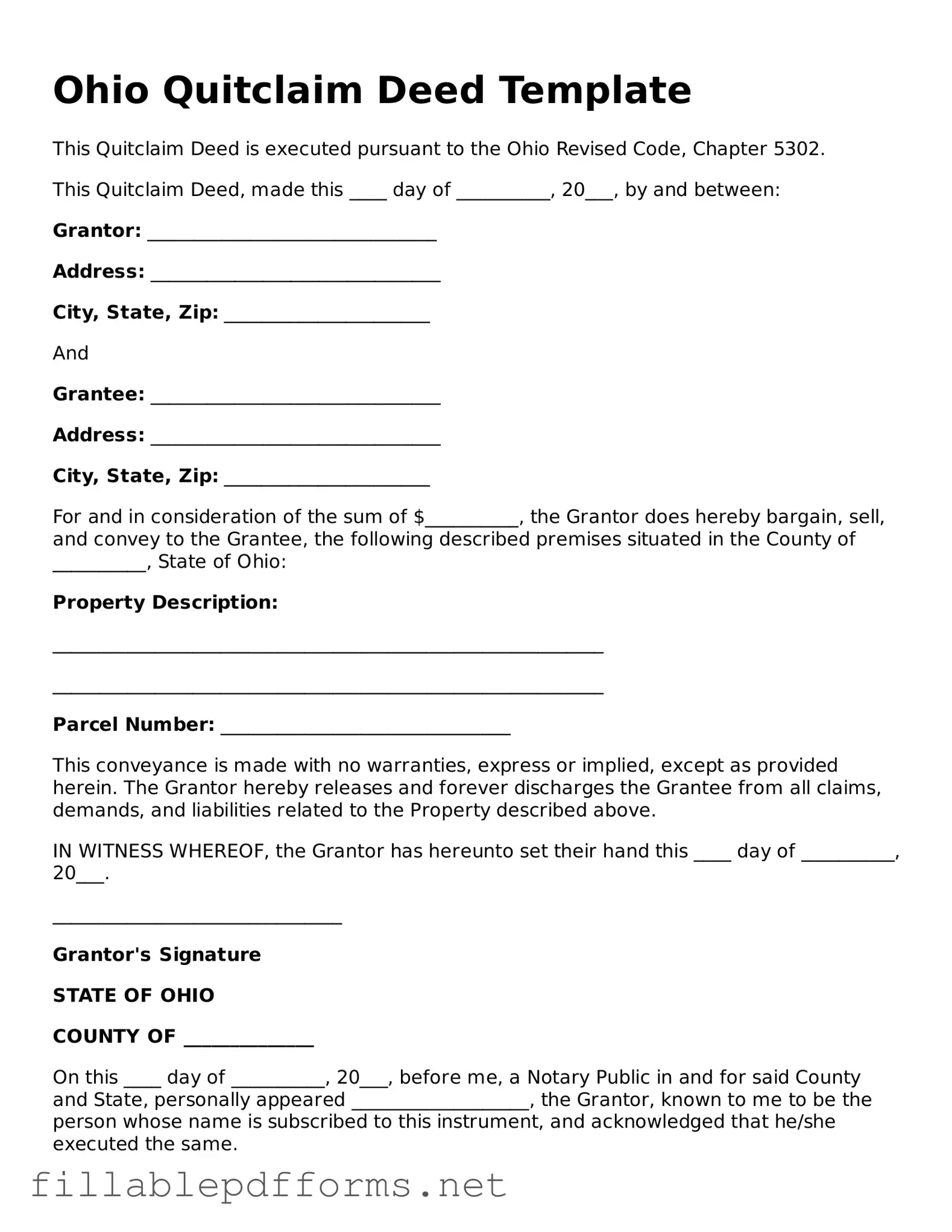When it comes to transferring property ownership in Ohio, the Quitclaim Deed form serves as a straightforward and efficient tool. This legal document allows one party, known as the grantor, to convey their interest in a property to another party, called the grantee, without making any guarantees about the title's validity. This means that the grantor is not promising that they own the property free and clear of any liens or encumbrances. Instead, the Quitclaim Deed simply transfers whatever interest the grantor may have, if any, making it particularly useful in situations such as divorce settlements, property transfers between family members, or clearing up title issues. It's important to understand that while the Quitclaim Deed is easy to complete and file, it does not provide the same level of protection as other types of deeds, such as warranty deeds. Therefore, it's wise for both parties involved to be aware of the implications and potential risks associated with this form. Understanding the nuances of the Quitclaim Deed can empower property owners to make informed decisions, ensuring a smoother transfer process and safeguarding their interests.
